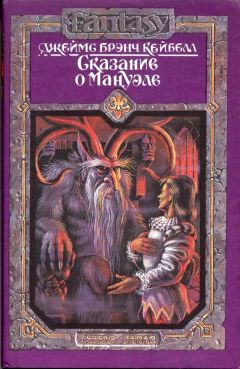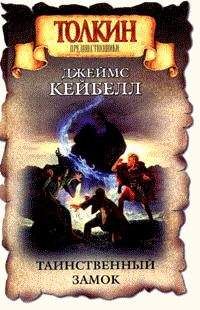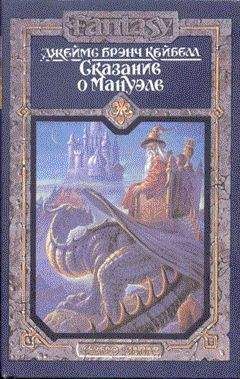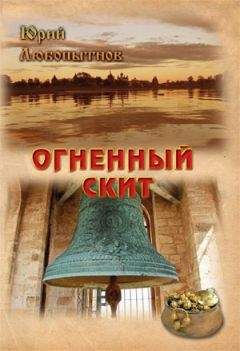Примечания автора
To
Six Most Gallant Champions
Is dedicated this history of a champion: less to repay than to acknowledge large debts to each of them, collectively at outset, as hereafter seriatim.
James Branch Cabell (1879 – 1958)
Figures of Earth is, with some superficial air of paradox, the one volume in the long Biography of Dom Manuel's life which deals with Dom Manuel himself. Most of the matter strictly appropriate to a Preface you may find, if you so elect, in the Foreword addressed to Sinclair Lewis. And, in fact, after writing two prefaces to this «Figures of Earth»—first, in this epistle to Lewis, and, secondly, in the remarks* affixed to the illustrated edition,—I had thought this volume could very well continue to survive as long as its deficiencies permit, without the confection of a third preface, until I began a little more carefully to consider this romance, in the seventh year of its existence.
But now, now, the deficiency which I note in chief (like the superior officer of a disastrously wrecked crew) lies in the fact that what I had meant to be the main «point» of «Figures of Earth,» while explicitly enough stated in the book, remains for every practical end indiscernible… For I have written many books during the last quarter of a century. Yet this is the only one of them which began at one plainly recognizable instant with one plainly recognizable imagining. It is the only book by me which ever, virtually, came into being, with its goal set, and with its theme and its contents more or less pre-determined throughout, between two ticks of the clock.
Egotism here becomes rather unavoidable. At Dumbarton Grange the library in which I wrote for some twelve years was lighted by three windows set side by side and opening outward. It was in the instant of unclosing one of these windows, on a fine afternoon in the spring of 1919, to speak with a woman and a child who were then returning to the house (with the day's batch of mail from the post office), that, for no reason at all, I reflected it would be, upon every personal ground, regrettable if, as the moving window unclosed, that especial woman and that particular child proved to be figures in the glass, and the window opened upon nothingness. For that, I believed, was about to happen. There would be, I knew, revealed beyond that moving window, when it had opened all the way, not absolute darkness, but a gray nothingness, rather sweetly scented… Well! there was not. I once more enjoyed the quite familiar experience of being mistaken. It is gratifying to record that nothing whatever came of that panic surmise, of that second-long nightmare—of that brief but over-tropical flowering, for all I know, of indigestion,—save, ultimately, the 80,000 words or so of this book.
For I was already planning, vaguely, to begin on, later in that year, «the book about Manuel.» And now I had the germ of it,—in the instant when Dom Manuel opens the over-familiar window, in his own home, to see his wife and child, his lands, and all the Poictesme of which he was at once the master and the main glory, presented as bright, shallow, very fondly loved illusions in the protective glass of Ageus. I knew that the fantastic thing which had not happened to me,—nor, I hope, to anybody,—was precisely the thing, and the most important thing, which had happened to the gray Count of Poictesme.
So I made that evening a memorandum of that historical circumstance; and for some months this book existed only in the form of that memorandum. Then, through, as it were, this wholly isolated window, I began to grope at «the book about Manuel,»—of whom I had hitherto learned only, from my other romances, who were his children, and who had been the sole witness of Dom Manuel's death, inasmuch as I had read about that also, with some interest, in the fourth chapter of «Jurgen»; and from the unclosing of this window I developed «Figures of Earth,» for the most part toward, necessarily, anterior events. For it seemed to me—as it still seems,—that the opening of this particular magic casement, upon an outlook rather more perilous than the bright foam of fairy seas, was alike the climax and the main «point» of my book.
Yet this fact, I am resignedly sure, as I nowadays appraise this seven-year-old romance, could not ever be detected by any reader of «Figures of Earth,» In consequence, it has seemed well here to confess at some length the original conception of this volume, without at all going into the value of that conception, nor into, heaven knows, how this conception came so successfully to be obscured.
So I began «the book about Manuel» that summer,—in 1919, upon the back porch of our cottage at the Rockbridge Alum Springs, whence, as I recall it, one could always, just as Manuel did upon Upper Morven, regard the changing green and purple of the mountains and the tall clouds trailing northward, and could observe that the things one viewed were all gigantic and lovely and seemed not to be very greatly bothering about humankind. I suppose, though, that, in point of fact, it occasionally rained. In any case, upon that same porch, as it happened, this book was finished in the summer of 1920.
And the notes made at this time as to «Figures of Earth» show much that nowadays is wholly incomprehensible. There was once an Olrun in the book; and I can recall clearly enough how her part in the story was absorbed by two of the other characters,—by Suskind and by Alianora. Freydis, it appears, was originally called Hlif. Miramon at one stage of the book's being, I find with real surprise, was married en secondes noces to Math. Othmar has lost that prominence which once was his. And it seems, too, there once figured in Manuel's heart affairs a Bel-Imperia, who, so near as I can deduce from my notes, was a lady in a tapestry. Someone unstitched her, to, I imagine, her destruction, although I suspect that a few skeins of this quite forgotten Bel-Imperia endure in the Radegonde of another tale.
Nor can I make anything whatever of my notes about Guivret (who seems to have been in no way connected with Guivric the Sage), nor about Biduz, nor about the Anti-Pope,—even though, to be sure, one mention of this heresiarch yet survives in the present book. I am wholly baffled to read, in my own penciling, such proposed chapter headings as «The Jealousy of Niafer» and «How Sclaug Loosed the Dead,»—which latter is with added incomprehensibility annotated «(?Phorgemon).» And «The Spirit Who Had Half of Everything» seems to have been exorcised pretty thoroughly… No; I find the most of my old notes as to this book merely bewildering; and I find, too, something of pathos in these embryons of unborn dreams which, for one cause or another, were obliterated and have been utterly forgotten by their creator, very much as in this book vexed Miramon Lluagor twists off the head of a not quite satisfactory, whimpering design, and drops the valueless fragments into his waste-basket… But I do know that the entire book developed, howsoever helterskelter, and after fumbling in no matter how many blind alleys, from that first memorandum about the troubling window of Ageus. All leads toward—and through—that window.
The book, then, was published in the February of 1921. I need not here deal with its semi-serial appearance in the guise of short stories: these details are recorded elsewhere. But I confess with appropriate humility that the reception of «Figures of Earth» by the public was, as I have written in another place, a depressing business. This romance, at that time, through one extraneous reason and another, disappointed well-nigh everybody, for all that it has since become, so near as I can judge, the best liked of my books, especially among women. It seems, indeed, a fact sufficiently edifying that, in appraising the two legendary heroes of Poictesme, the sex of whom Jurgen esteemed himself a connoisseur, should, almost unanimously, prefer Manuel.
For the rest,—since, as you may remember, this is the third preface which I have written for this book,—I can but repeat more or less what I have conceded elsewhere. This «Figures of Earth» appeared immediately following, and during the temporary sequestration of, «Jurgen.» The fact was forthwith, quite unreticently, discovered that in «Figures of Earth» I had not succeeded in my attempt to rewrite its predecessor: and this crass failure, so open, so flagrant, and so undeniable, caused what I can only describe as the instant and overwhelming and universal triumph of «Figures of Earth» to be precisely what did not occur. In 1921 Comstockery still surged, of course, in full cry against the imprisoned pawnbroker and the crimes of his author, both literary and personal; and the, after all, tolerably large portion of the reading public who were not disgusted by Jurgen's lechery were now, so near as I could gather, enraged by Manuel's lack of it.
It followed that—among the futile persons who use serious, long words in talking about mere books,—aggrieved reproof of my auctorial malversations, upon the one ground or the other, became in 1921 biloquial and pandemic. Not many other volumes, I believe, have been burlesqued and cried down in the public prints by their own dedicatees… But from the cicatrix of that healed wound I turn away. I preserve a forgiving silence, comparable to that of Hermione in the fifth act of «A Winter's Tale»: I resolve that whenever I mention the names of Louis Untermeyer and H.L. Mencken it shall be in some connection more pleasant, and that here I will not mention them at all.
Meanwhile the fifteen or so experiments in contrapuntal prose were, in particular, uncharted passages from which I stayed unique in deriving pleasure where others found bewilderment and no tongue-tied irritation: but, in general, and above every misdemeanor else, the book exasperated everybody by not being a more successfully managed re-hashing of the then notorious «Jurgen.»
Since 1921, and since the rehabilitation of «Jurgen,» the notion has uprisen, gradually, among the more bold and speculative thinkers, that perhaps I was not, after all, in this «Figures of Earth» attempting to rewrite «Jurgen»: and Manuel has made his own friend.
James Branch Cabell
Richmond-in-Virginia
30 April 1927
* Omitted in this edition since it was not possible to include all of Frank C. Papé's magnificent illustrations. – THE PUBLISHER
«Amoto quoeramus seria ludo»
To Sinclair Lewis
A ForewordMy Dear Lewis:
To you (whom I take to be as familiar with the Manuelian cycle of romance as is any person now alive) it has for some while appeared, I know, a not uncurious circumstance that in the Key to the Popular Tales of Poictesme there should have been included so little directly relative to Manuel himself. No reader of the Popular Tales (as I recall your saying at the Alum when we talked over, among so many other matters, this monumental book) can fail to note that always Dom Manuel looms obscurely in the background, somewhat as do King Arthur and white-bearded Charlemagne in their several cycles, dispensing justice and bestowing rewards, and generally arranging the future, for the survivors of the outcome of stories which more intimately concern themselves with Anavalt and Coth and Holden, and with Kerin and Ninzian and Gonfal and Donander, and with Miramon (in his rôle of Manuel's seneschal), or even with Sclaug and Thragnar, than with the liege-lord of Poictesme. Except in the old sixteenth-century chapbook (unknown to you, I believe, and never reprinted since 1822, and not ever modernized into any cognizable spelling), there seems to have been nowhere an English rendering of the legends in which Dom Manuel is really the main figure.





